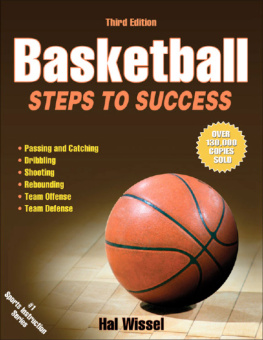Sam Shankland - Chessable - Small Steps 2 Success
Here you can read online Sam Shankland - Chessable - Small Steps 2 Success full text of the book (entire story) in english for free. Download pdf and epub, get meaning, cover and reviews about this ebook. genre: Art. Description of the work, (preface) as well as reviews are available. Best literature library LitArk.com created for fans of good reading and offers a wide selection of genres:
Romance novel
Science fiction
Adventure
Detective
Science
History
Home and family
Prose
Art
Politics
Computer
Non-fiction
Religion
Business
Children
Humor
Choose a favorite category and find really read worthwhile books. Enjoy immersion in the world of imagination, feel the emotions of the characters or learn something new for yourself, make an fascinating discovery.

- Book:Chessable - Small Steps 2 Success
- Author:
- Genre:
- Rating:3 / 5
- Favourites:Add to favourites
- Your mark:
- 60
- 1
- 2
- 3
- 4
- 5
Chessable - Small Steps 2 Success: summary, description and annotation
We offer to read an annotation, description, summary or preface (depends on what the author of the book "Chessable - Small Steps 2 Success" wrote himself). If you haven't found the necessary information about the book — write in the comments, we will try to find it.
Chessable - Small Steps 2 Success — read online for free the complete book (whole text) full work
Below is the text of the book, divided by pages. System saving the place of the last page read, allows you to conveniently read the book "Chessable - Small Steps 2 Success" online for free, without having to search again every time where you left off. Put a bookmark, and you can go to the page where you finished reading at any time.
Font size:
Interval:
Bookmark:
[Event ?]
[Site ?]
[Date ????.??.??]
[Round ?]
[White 1. Introduction]
[Black Preface]
[Result *]
{ The year-and-a-half between finishing Small Steps to Giant Improvement and writing Small Steps 2 Success was the most eventful of my career. I won the US Championship, the Capablanca Memorial and the American Continental back to back to back, and finally smashed through the 2700 barrier after having been stuck in the mid-to-high 2600s for a few years.Obviously I was ecstatic at making this breakthrough, but also determined to make sure I would not be a flash in the pan. I analyzed my games closely and reached some conclusions about the massive difference in the quality of my play between 2017 and 2018.I found that a surprisingly large number of my games featured topics I had explicitly researched and written about in Small Steps to Giant Improvement. I even had a nearly identical position in the 2018 Olympiad, where the work I did helped me understand the position better and score the critical victory in the USAs 2-1 win over Azerbaijan on the top table. I became more aware of my opponents mishandling of their pawns, and exploited their mistakes more effectively than before. I followed the books guidelines almost every time I could, and they tended to work. There is no example more illustrative than the encounter that made me US Champion.Sam Shankland - Awonder Liang, St Louis 2018 }
1. e4 c6 2. d4 d5 3. exd5 cxd5 4. Bd3 Nc6 5. c3 Nf6 6. Bf4 Bg4 7. Qb3 e5 8. h3
exf4 9. hxg4 Qe7+ 10. Kf1 O-O-O 11. Nd2 g6 12. Re1 Qc7 13. g5 Nh5 14. Be2 Ng7
15. Ngf3 Ne6 16. Bb5 Bg7 17. Qa4 Rd6 18. Nb3
{ The idea was to provoke b6, which will weaken the light squares around Blacks king. }
18 b6 { My opponent obliges me. } 19. Nc1 Nb8 20. Nd3 Kb7
{ Once again, I made a move intended to provoke my opponents pawn forward. }
21. Nb4
{ The knight is superbly placed and White has prevented the threat of a6. Black can and probably should expel the knight by means of a5, but this will not save him. }
21 a5
{ In the game, Black tried 21Qd8 but promptly lost material after 22.Ne5 ! Qc7 23.Qb3 ! , when he could not hold all of the d5-, f7-and h7-pawns. I went on to win with no further trouble: 23Rhd8 24.Rxh7 a6 25.Bd3 Ka7 26.Qa4 a5 27.Bb5 Kb7 28.Nbd3 Rg8 29.Nf3 Rh8 30.Rxh8 Bxh8 31.a3 Nc6 32.Bxc6+ Rxc6 33.Nde5 Bxe5 34.Nxe5 Rd6 35.Qe8 Rd8 36.Qxf7 Nxg5 37.Qxc7+ Kxc7 38.Nxg6 f3 39.Nf4 Kc6 40.gxf3 Nxf3 41.Re6+ Kb5 42.Ke2 Ng1+ 43.Kd3 1-0 }
22. Nd3
{ We have the same position as just a moment ago, except White has played the move a5 for his opponent instead of making a move himself. This pawn advance is horribly detrimental for Black as it not only allows the bishop to stay on the fantastic b5-square for the rest of the game, but also creates a hook on the queenside, enabling White to open lines of attack with b2-b4 at a suitable moment. He should be winning, and the preceding couple of moves would have fit perfectly into Chapters 7 or 10 of Small Steps to Giant Improvement.The book helped a lot more players than just me. It sold extremely well, and I never saw a rating other than five stars. Despite the overwhelmingly positive feedback, I took some constructive criticism to heart and made some minor changes in the second volume. There is a little less text and significantly more (and sometimes harder) exercises. The chapters are a little longer and more detailed, but there are only fourteen of them instead of sixteen. I have largely refrained from reciprocal guidelines when dealing with the same topic from the other side of the board. This book reads a little less like a manual - but overall, the structure remains the same.In the Introduction to the first volume, I wrote If Small Steps to Giant Improvement proves to be a successful book, I will write a second volume on some of the other pawn-related topics. My word is my bond, but I never cited a timeline in which this had to happen. I could have chosen to write the follow-up many years in the future, after my playing career is over and when I would have more time to write, without having to worry about studying or training. Yet instead, I chose to write the second volume at more or less the first opportunity.The reason for this is, once again, largely selfish. I wrote Small Steps to Giant Improvement not because I longed to write a book, but because I wanted to investigate a topic that I did not understand as well as I should have. I strongly believe that the study and process of writing Small Steps to Giant Improvement improved my understanding dramatically, and was one of the biggest reasons for my recent meteoric rise. I wrote Small Steps 2 Success as a means of continuing to investigate a topic that I would like to understand better, in the hope that my studies would help me become a better player. I made another set of guidelines that I believe have improved my understanding; and although only time will tell, I am confident that the improved understanding I came to by writing Small Steps 2 Success will help me further along in my quest to become the best chess player I can be.Just like last time, Im hopeful that the fruits of my studies will not only be a catalyst to my own future improvement, but will also be of benefit to other aspiring chess players. It is my sincere hope that Small Steps 2 Success will help the readers improve their chess-playing abilities.Sam Shankland, Walnut Creek, USA, August 2019 }
*
[Event ?]
[Site ?]
[Date ????.??.??]
[Round ?]
[White 1. Introduction]
[Black Introduction (1)]
[Result *]
[FEN 5k2/7p/5K1P/8/8/8/1B6/8 w - - 0 1]
[SetUp 1]
{ Small Steps to Giant Improvement was all about pawns not being able to move backwards, and seldom moving sideways. It focused on times that players mismanaged their pawns, creating weaknesses in their own position, as well as how to provoke an opponents pawn forward to make them suffer from the same weaknesses we were trying to avoid. While this is undoubtedly a very important topic, this book covers the polar opposite situations.Before we move on to the subject at hand, I do have a small retraction to make. While I stand by my work in the previous book, it is still an authors duty to correct any mistakes.On page 51, I wrote the following:Note that White would be winning if the pieces were shifted one file to the left.I have since been made aware that the position would, in fact, still be a draw. Consider yourself warned ! }
1. *
[Event ?]
[Site ?]
[Date ????.??.??]
[Round ?]
[White 1. Introduction]
[Black Introduction (2)]
[Result *]
[FEN 8/p7/1n3K2/4R3/7P/8/2k5/8 b - - 0 1]
[SetUp 1]
{ With that aside, lets move on to our topic at hand.We all know the power of passed pawns. By the traditional material count, a pawn is worth one point, bishops and knights are worth three, a rook is worth five and a queen is worth nine. As such, a pawn becoming a queen can massively change the evaluation of a position. Even people who do not play chess tend to know of the promotion rule, whereby the humble pawn transforms into the valuable piece.I can think of no better way to illustrate the power of promotion than turning to the drama of Hollywood, with the ending of a fictional game which was shown in the movie Searching for Bobby Fischer. The White player is a fictional character, whereas Josh Waitzkin is, of course, real. Jonathan Poe - Josh Waitzkin, The Big Screen 1993 }
1 Nd7+ 2. Kf5 Nxe5 3. Kxe5
{ In the movie, both sides were playing their moves instantly and White slammed down this losing move in less than a second, despite visibly having some fifteen minutes on his clock. 3.h5 ! This draws with a tempo to spare. Thus, if it had been legal to pass and do nothing on move 3, this would still have been a great improvement on capturing the knight. 3Nf7 3a5 4.h6 a4 5.h7 Nf7 6.Kg6 Nh8+ 7.Kg7 leads to the same thing. 4.Kg6 The knight will not find a stable home. 4Nh8+ 4a5 ?! does not help: after 5.Kxf7 a4 6.h6 White will promote first, although Black still draws by one tempo. 5.Kg7 a5 6.Kxh8 a4 7.h6 a3 8.h7 a2 9.Kg8 a1=Q 10.h8=Q With an obvious draw. }
Next pageFont size:
Interval:
Bookmark:
Similar books «Chessable - Small Steps 2 Success»
Look at similar books to Chessable - Small Steps 2 Success. We have selected literature similar in name and meaning in the hope of providing readers with more options to find new, interesting, not yet read works.
Discussion, reviews of the book Chessable - Small Steps 2 Success and just readers' own opinions. Leave your comments, write what you think about the work, its meaning or the main characters. Specify what exactly you liked and what you didn't like, and why you think so.



